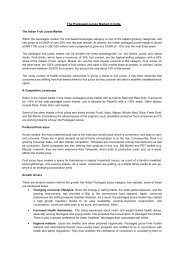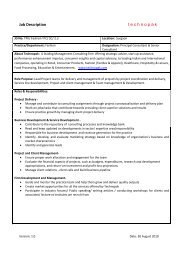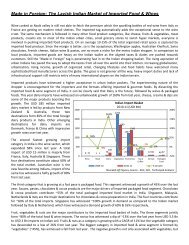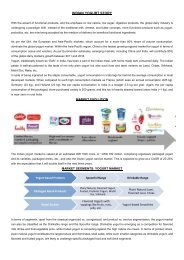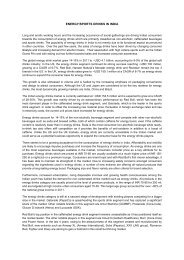a quarterly report by - Technopak
a quarterly report by - Technopak
a quarterly report by - Technopak
You also want an ePaper? Increase the reach of your titles
YUMPU automatically turns print PDFs into web optimized ePapers that Google loves.
perspective<br />
a quar terly repor t <strong>by</strong><br />
Volume 02 / 2009<br />
| Volume 02<br />
While managing a hospital revenue cycle, the following ought to be kept in mind:<br />
•Payment<br />
collection: Hospitals can optimize revenues <strong>by</strong> putting in place a defined process for collecting<br />
payments from patients either at registration or at day end<br />
•Third-party<br />
payers: Absence of standard protocols leads to ambiguity which causes complexity in the<br />
matter and delays<br />
•Follow-up:<br />
Hospitals need to have an agile follow- up system to ensure timely payments<br />
•Denial<br />
management: This involves sorting out circumstances which led to claim denial. They can vary<br />
from failure on part of patient to adhere to standard procedures or clinician confusion with respect to<br />
treatment<br />
•Healthcare<br />
is witnessing a transition from Out-of-pocket spending towards Corporate and Third-party<br />
Payments. As a result, Hospital Revenue Cycle Management will become a critical factor in determining<br />
the financial health of the providers<br />
•Outstanding revenues that exceed<br />
the industry average<br />
•Receivables inexcess of 30%<br />
of revenue<br />
•Increase in bad debts as % of<br />
revenue<br />
•Lack of Working Capital<br />
47 | Building Operational Efficiency in Healthcare Delivery<br />
Average collection period = (Net amount receivable * 365) ÷ Net patient revenues<br />
(Measured as days in net accounts receivable)<br />
A shorter average collection period implies that the hospital receives faster payments from the insurer)<br />
Exhibit 9 Exhibit 10<br />
What to look out for: Some of the Best Practices<br />
Registration<br />
•Collection of all neccesary<br />
demographic data for<br />
scheduled patients<br />
•Defined prerequisites<br />
•On-line alert indicators<br />
•Regular tracking and<br />
monitoring<br />
Payment collections Denial Management<br />
•Standardized policies,<br />
procedures and employee<br />
training<br />
•Optimal utilization of IT<br />
•Electronic claimssubmission<br />
•Denial tracking<br />
•Case reviews<br />
•Documentation of all<br />
interactions



